For years there has been an argument over the so-called “Polo” style helmet that was captured by German forces and used in the early stages of the campaign in North Africa. This writer actually tried to debunk that these were captured “Dutch” helmets, after a number of sources over the years suggested otherwise.
My argument had been that the Dutch had no African colonies so how could the German military have captured helmets intended for the Dutch Army?
This is where the confusion lies – and it has been a topic debated. Some had suggested the helmets were in fact South African made and captured by the Germans following the Siege of Tobruk, which lasted from the middle of April 1940 until the end of November of the same year. However, studio photos of German soldiers – taken in Europe from March to May of that year would cast doubt on that argument.
Now evidence has come together that may solve this mystery – and helps explain why similar style polo helmets were made in England by Failsworth Hats and then later produced in Canada as a modified version of the pressed fiber helmets from Hawley Products Canada.
To begin with the South African military opted to replace the Wolseley pattern helmet – just as the British military was doing. The South African Air Force adopted the signature polo style helmet in 1930, which was deemed less cumbersome than the Wolseley.
In 1934 the change to polo helmets was officially signaled when army recruits were issued with this pattern alongside the older Wolseleys – and by December 1934 the Wolseley was considered obsolete when the new Permanent Force Dress instructions make no further mention of it.
The polo helmets made for a good alternative to the Wolseley as these featured a narrower brim yet were similar in shape to the Indian-made helmets of the era. However, unlike the Indian patterns the polo style helmets – which I do believe were at least based on actual polo helmets of the era – were made of cork and later reinforced felt as opposed to the Indian sola pith. This point becomes very important if we are to understand the timeline.
The polo helmets were considered better for the bush warfare that was waged by the South African forces, and these helmets had been field tested during the Ipumba uprising of 1932. By 1935 the polo helmet was in general wear by the South African military forces.
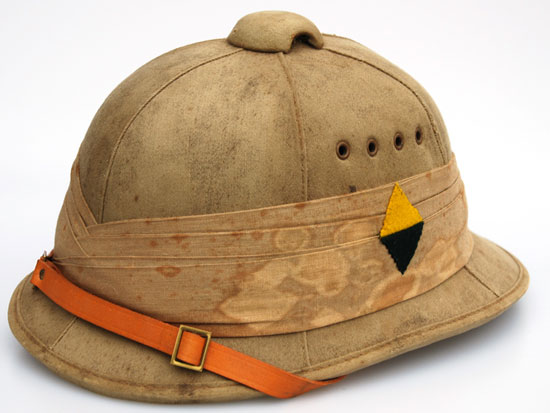
The “Classic” South African “Polo” Helmet – featuring the flash of the First South African Division. This example was made in 1943 in South Africa – but appears the same as the Dutch-made versions (Author’s Collection)
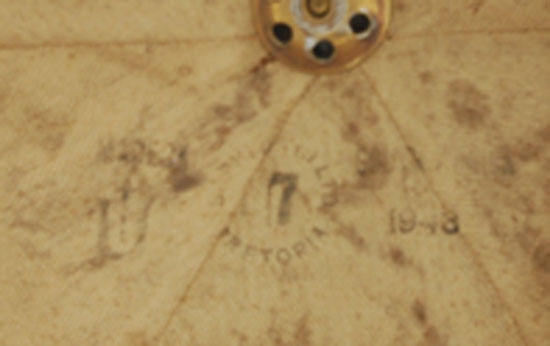
The helmet features the U Arrow stamp and is dated 1943 and was made in Pretoria (Collection of the Author)
According to evidence gathered by a group of collectors and discussed at length on various militaria forums it appears that the Dutch company “JP.de Mol, Breda” was granted a pre-war contract to manufacture these for export to the South African military. What is important to note is that these helmets even featured the U arrow stamp that was used in other South African military equipment and which was based on the British military’s broad arrow stamp.
In other words the helmets were always intended for the South Africans – and never for the Dutch Army. This is point I’ve maintained from the beginning of this discussion. The helmets were completely different from anything the Dutch Army was using in its distance Far East colonies.
Thus the helmets were made in Holland 1940 – at a time when it was likely expected that the Netherlands would in fact remain neutral as it had been in the First World War. These helmets had the U-Arrow stamp as well as the well known “JP de Mol Breda, Holland” stamp and 1940 date. It is no doubt this “Holland” stamp that has confused collectors since a few of these ended up in books about the German Afrika Korp and gave credence to the notion that these were captured Dutch Army sun helmets.
What is important next to note is that these export contract of S.A. Forces piths never left the Netherlands, instead these helmets were captured by the Germans and subsequently diverted to the Reich where these were among the first sun helmets issued to the Afrika Korp. As noted in the discussions, elements of the 15th Panzer Div were issued these on or before Easter (4-14-1941), which is proven by photographic evidence from the time.
It would appear the South African forces that fought at the Tobruk and in the rest of the North African campaign were thus forced to rely on pre-war stocks of helmets made in South Africa. It seems that the South Africans sought to have other helmets and produced and this could explain why the British-made versions are a bit different.
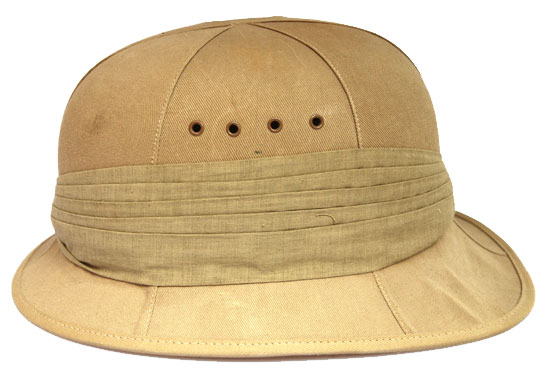
A British-made “Polo” helmet. Note that it has the same basic shape of the South African-made version, but lacks the ventilator cap on the top. Its body is also made of felt rather than cork (Collection of the Author)
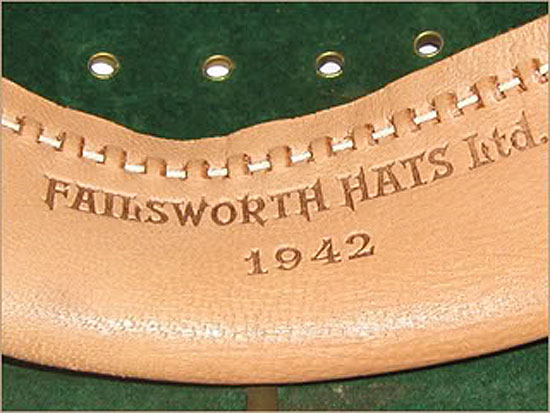
This example is dated 1942 and was made by “Failsworth Hats Ltd.,” a maker of polo equipment (Collection of the Author)
These were produced by Failsworth Hats in 1941-42 and instead of being made of cork these are made of a heavy felt. It should be noted that around the same time the Wolseley helmet was being produced in felt, likely because supplies of cork – the original and preferred material – was likely in short supply as it was sourced from Portugal. Without the cork the British hat makers turned to felt, and opted to streamline the process by not including the typical ventilator cap at the top of the helmet.
Perhaps to help in the production of helmets the South Africans also around the same time turned to Hawley Products Canada, which as noted produced a modified version of the helmet using the same pressed fiber materials as were used in the Canadian helmets. What is unique about this is that the Canadian military only used the fiber helmets for training and it isn’t believed many – if any – actually were used in Europe or the Pacific. However, based on evidence of flashes and badges on these it does seem that the South Africans did in fact issue these helmets to soldiers. Some of these may have been in the post-war years, but it does seem that the contracts were fulfilled to some degree.
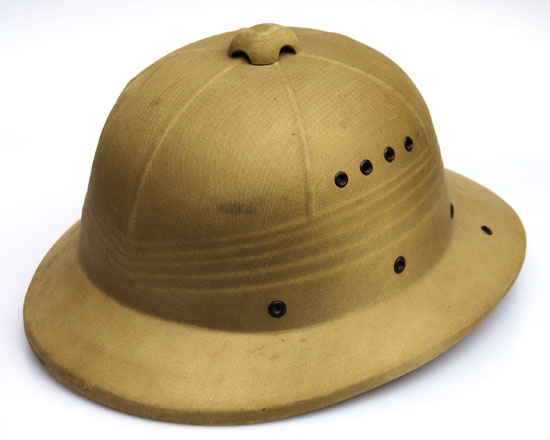
The Canadian version of the South African polo helmet. This is the only pattern of the pressed fiber helmets to feature an actual ventilator cap, but it still maintains the row of four holes seen in there other South African sun helmets – and interestingly includes three holes to the rear rim, which was likely used for a neck curtain. Those three holes also appear on the South African used MkII steel helmets (Collection of the Author)
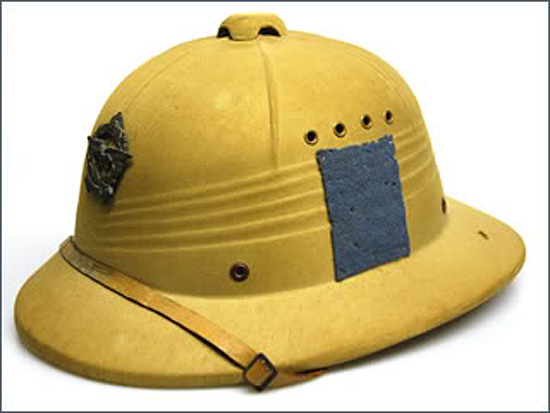
A Canadian-made pressed fiber helmet that features a World War II era badge to the South African Royal Air Corp as well as the blue flash sewn to the sides (Collection of the Author)
The final part of this could also explain why the Germans adopted the so-called second pattern tropical helmet, which was also made of felt. It could be that the Germans encountered the British and South African felt helmets and saw that it fulfilled the role without using the difficult to option cork. Of course it also now seems likely that the large quantities of felt helmets, as well as pressed fiber helmets, may have arrived too late as the war in Africa was winding down by 1943.
Still this evidence helps define a timeline of when cork supplies ran low and felt was used as a replacement.

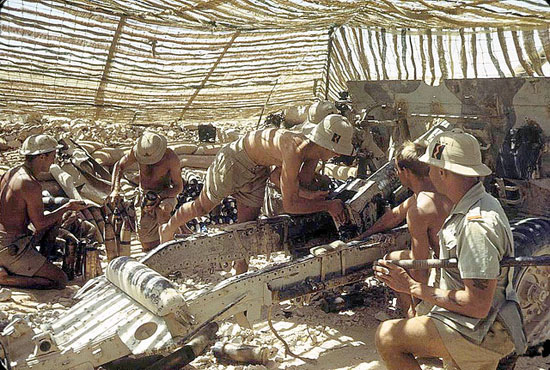
Hello Peter, thank you for your reference site which I consult often for my researches.
This time I hope to be useful to you by pointing you to an image which shows an italian soldier
with an, evidently captured, pressed fiber sun helmet .
http://www.gettyimages.at/ereignis/desert-war-north-africa-and-the-middle-east-1940-1943-185175973#italian-infantry-soldiers-defusing-antitank-mines-that-the-british-picture-id141557174